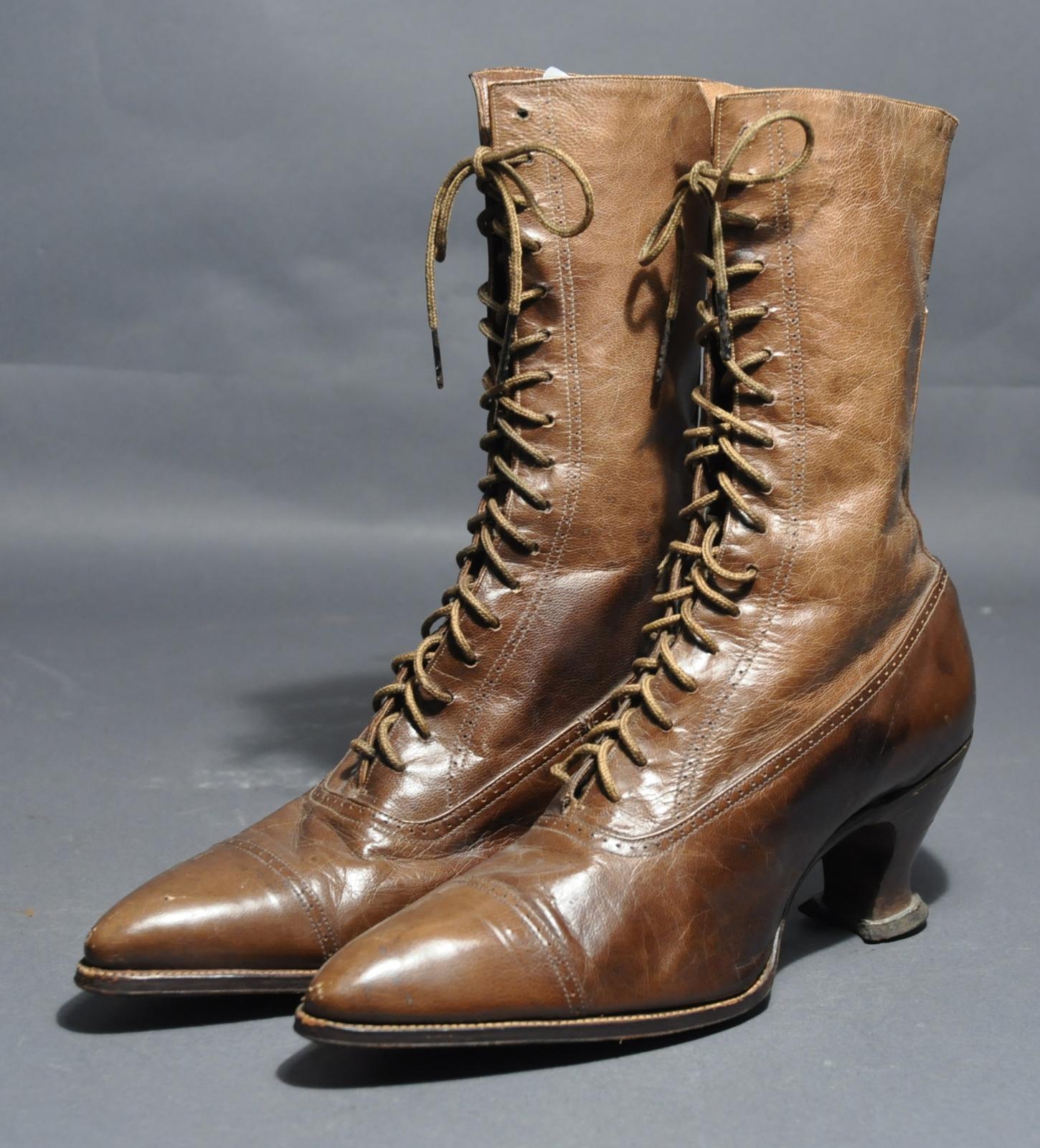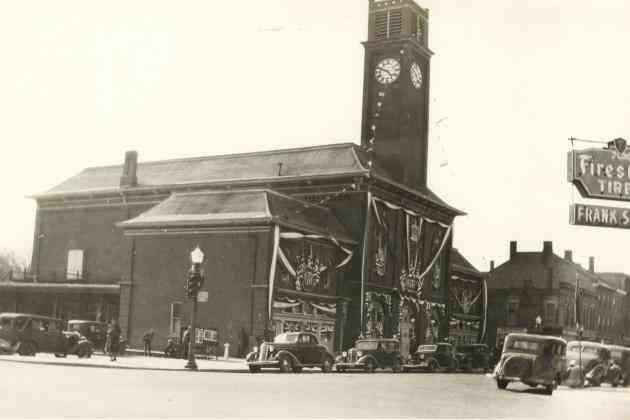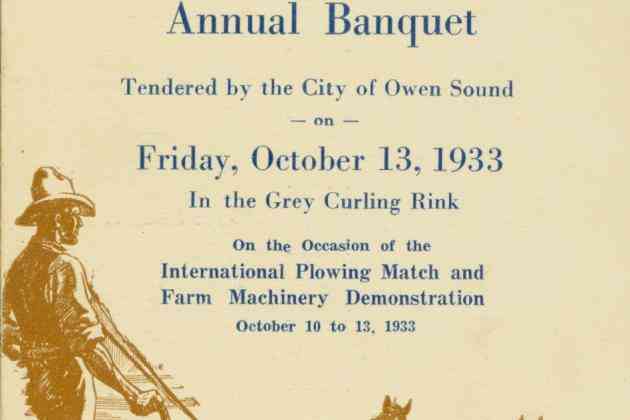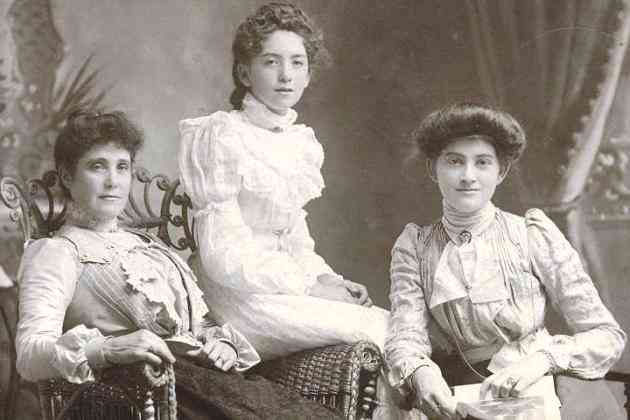War-Time Memories of the Owen Sound Area – Circa 1915
The year “1915” is on my mind today. A researcher enquired last week about what life was like locally for families sending their boys off to war during that year of the First World War. At that time, it was the “European War”. The families of soldiers participated in the war effort in different ways. There were Women’s Patriotic Leagues and Red Cross groups, as well as the Women’s Institutes and I.O.D.E. (Imperial Order Daughters of the Empire) for ladies and girls to participate in. These groups were important motivators, as there was a tremendous amount of sewing, knitting, mending and fund-raising to be accomplished for the war effort. Churches provided solace for many people who were worried about their loved ones. In town, gardens were put into former flower gardens to increase food production, and apparently became quite prevalent. There were parties for shipping parcels overseas with treats or useful items intended to boost the morale of local men who had already left. Realization had set in that this would not be a quick war, and there was an urgency for signing up more military recruits. In 1915, the fellows attesting to the Canadian Expeditionary Force (C.E.F.) battalions were volunteers. If I was a parent then, I probably would have been quite worried about my under-age son joining up without my permission, and mis-representing his age (e.g. Owen Sound’s Tommy Holmes was under-age, when he attested with the 147th Grey (Overseas) Battalion in December of 1915).
Those who had misgivings about Canadian participation in the war did not tend to voice it much, as there was a lot of societal pressure to support England. In the early part of the war, an Owen Sound public school nurse, Katharine M. Wilson, when witnessing a parade of recruits in Owen Sound, did happen to overhear Dr. T. H. Middlebro’ murmur sadly that the eager young fellows marching past them, not even uniformed yet, were likely going to be “fodder for cannon”, but he probably didn’t say this out loud in other situations. Kate Wilson, a professionally-trained nurse, would also leave Owen Sound in 1915, as she became a Canadian nursing sister and served overseas. She later recounted in her memoir that a couple of her former male classmates had enlisted, “Our boys were donning khaki. Everyone was bursting with pride in our nation, and I was as affected by this patriotic fervour as anyone else” (p. 2 Lights Out: The Memoir of Nursing Sister Kate Wilson Canadian Army Medical Corps 1915-1917). Nursing Sister Wilson was with the Second Contingent. Then the Third Contingent of men was needed. On May 18th 1915, about 7,000 area people, with a three-block parade that had four bands in attendance sent off members of the 37th Battalion from Owen Sound. in Grey County would soon have to deal with the sad prospect of even more boys deciding to join up and go away. The 147th Battalion was formed on November 27, 1915, and recruiting began for it and continued into 1916.
Owen Sound’s harbour was less busy in 1915.There were still trains meeting the ships and there were still American tourists (the U.S. didn’t enter the war until 1917). Hockey and curling and lawn bowling matches were still underway during the year. Scrapyards saw prices soar, and the metal was sent to Hamilton to be melted down.
Melba Morris Croft was a girl during the war, and her older brother, Dr. G. D. Morris, had served during it. Although she was born in Owen Sound, ’s family had moved away in 1911, so in her later years, when she was a resident here again, she had to conduct research about what life was like in her hometown during the war years. I find her book Growth of a County Town a good way to learn about the happenings of each year in Owen Sound, as she went through the microfilmed newspapers during the course of her research and noted things of interest to her, and also talked to people who also shared their memories of the time period with her. I had a look at the 1915 section of her book and it mentions that families were starting to miss having a father’s discipline at home. The soldier’s pay for unmarried men who were training was 50 cents per day, married men earned 75 cents per day, and men who were supporting their mother also earned 75 cents per day. The wife or widowed mother of a soldier was to receive $15 a month from the soldier’s pay. Civilians in the Owen Sound area saw soldiers doing drills and on training marches along town streets, in Sarawak Township, and at Victoria Park. Salaries were decreased locally (for example, the Town clerk’s salary was reduced by $500), and renovations to the Town Hall and Grand Trunk Railway station were postponed. Three hundred poor children were being fed by the Salvation Army, and the Town found it needed to help more families than usual, had a benevolent budget for this, but there was likely financial hardship for many.
The new war tax had increased prices on various things. Owen Sound had a monthly “horse fair” at the Queen’s Hotel in the early 1910s. In February, 1915, it appears that local horses were purchased for overseas use (no white or grey ones were wanted, and the horses had to be at least 15 hands 3 inches, but the prices were good for them). Melba Croft also notes that letter-writing clubs were popular, as it was important to help communicate with the soldiers who were away. Home parties increased, as the Savoy Theatre was closed for a time, and it seems that music parties were popular. Wheat and peas were scarce, and the “bottom fell out of the grain market”. On November 17, 1915, around 23,000 volts of electrical power were received at Owen Sound from the new Eugenia power plant project, so people were likely getting more interested in using electrical power for lights and household appliances, but likely couldn’t afford them, and new factory-made goods were getting harder to obtain from store shelves. Men played “ horseshoe toss” and bet on the games, with the money sent to the ” Tipperary Tearoom” in Owen Sound, a main street locale where ladies provided ten cent lunches for returned soldiers. 1915 was also the year Wm. Kennedy & Sons Limited received war contracts (they now made shell casings, and 25,000 steel shells were ordered). The Owen Sound tent company had an order for 10,000 canvas bags for soldiers. The Northern Bolt, Screw & Wire company of town was purchased, and all of its machinery shipped out elsewhere.
Many were worried about the Belgian civilians, as well as the “boys” overseas. Owen Sound had a local trust raising money to help Belgian children. According to Melba’s research, two Belgian girls were brought to Owen Sound to stay with their aunt. Grey County also sent relief supplies to Belgium in 1915 in the form of bags of flour from Grey County mills. Grey Roots has one former flour bag (now embroidered) from this relief effort currently on exhibit upstairs at the Grey County Administration building, so check it out if you are visiting there. Another 1915 flour bag, originally filled with flour milled at Meaford, also survives in the museum collection. Owen Sound also managed to achieve the third-highest production of potatoes in Ontario during the Great War.
I am surprised that there are actually so few tangible reminders left of 1915 civilians of Grey in our collection. There were fundraising quilts made during the Great War (Grey Roots has some examples, but there are no quilts with the exact 1915, but there is a 1914-dated St. Vincent Township one, so there were likely 1915 ones made in the area). Church groups, Women’s Institutes, and Red Cross groups subscribed in communities for people to pay a fee (usually ten cents each) to include their names on a quilt. The names were embroidered onto the quilt blocks, and sometimes soldier names were also included. When finished, the quilt would usually be raffled off to make even more money for a war-related project.
We have a pair of ladies’ leather boots from c. 1915 that were worn in the area, and they look so uncomfortable with their pointed toes, that I wonder how women of the time ever managed to do all the extra work they had to undertake while the “boys” were away. But they did it, even if their feet hurt a lot.
1959.027.001ab Woman’s Leather Lace-up Boots, c. 1915
2006.005.001 Printed flour bag sent to Belgium by Grey County, that was found in Mons, Belgium by a Canadian soldier and later returned to Grey.









